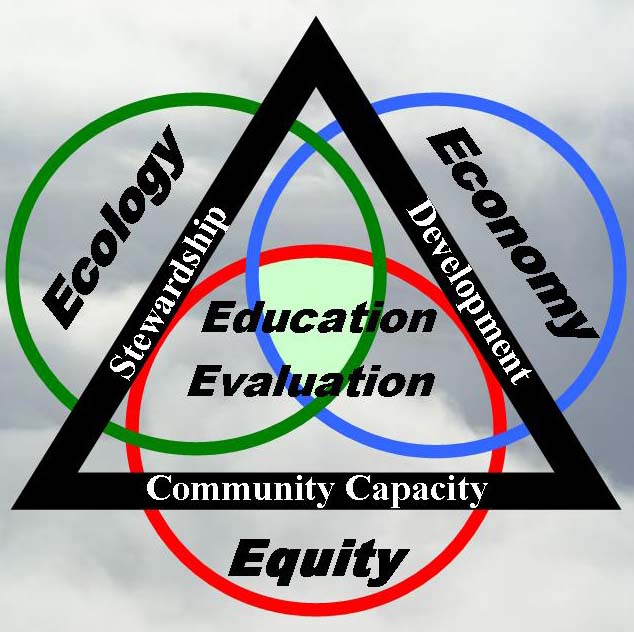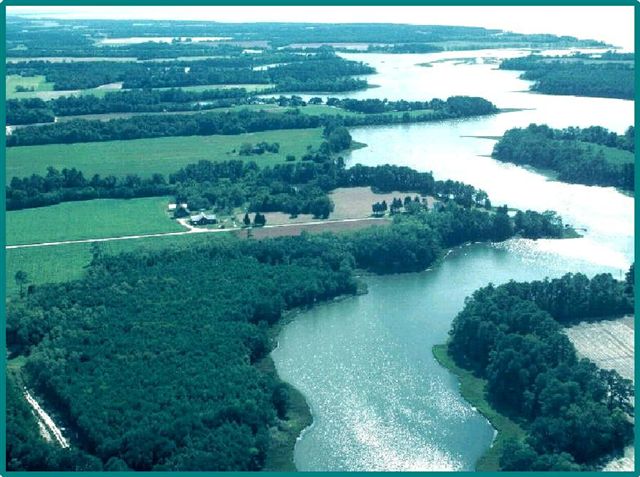|
Sustainable Water Resources
Roundtable,
Washington, DC (2003-2009). Serve on the Steering Committee
of the Sustainable
Water Resources Roundtable (SWRR) whose mission
is to promote exchange of water resource information and
sustainability indicator measures among government, industry,
professional, public interest, and academic groups. I Serve
as a member and advisor of a task force convened to examine
the criteria that define sustainable water resources for
the United States. The task force is comprised of governmental
officials, industry representatives, non-profit organizations,
academicians, and consultants that meet regularly to synthesize
and integrate data relative to the sustainability of surface
and groundwater resources. I contribute through meeting
planning, research on water indicators, facilitation of
workgroups and large meetings, and 4 peer-reviewed publications
including: The
Sustainable Development of Water Resources; Water
resource sustainable management: Thinking like a watershed; Chesapeake
Bay: The Opportunity for Integrated Solutions, pg. 26-31. In: Sustainable
Water Resources Roundtable Report;
and Missouri
River Basin: Need for Sustainable Management, pgs. 32-39. In: Sustainable
Water Resources Roundtable Report. Contact: Dr.
David Berry, Washington, DC.tel: (703) 741-0791. e-mail:
davidberry@aol.com or Mr. John Wells, Minnesota
Environ. Quality Bd., St. Paul, MN 55155. tel: (651)
201-2475. e-mail: john.wells@state.mn.us.
Community Sustainable
Development Assistance, Lake Tahoe (CA)-Northern Nevada (September,
2006). Served as a member of a Sustainable Design Assessment
Team (SDAT) for the American Institute of Architects (AIA),
Communities by Design program. Conducted a week-long charrette
designed to help the communities of Lake Tahoe, Truckee,
Reno, and Carson City assess their strengths and weaknesses
with regards to water resources, land-use, transportation,
energy, and economic development. Conducted a series of
workshops to develop the background on issues, seek stakeholder
input on core values and important concerns for the future,
and provide recommendations for the communities to proceed
in a sustainable fashion. Developed a team Assessment
Report that strongly recommended to the different
communities that they begin to plan on a regional basis
since they are very closely linked by a common watershed,
transportation corridors, commerce, and labor force. Affordable
housing was also a significant issue to all communities
involved in the assessment. My leadership in water quality
issues provided a strategic process for the involved communities
into the exploration and design of Low Impact Development
(LID) policies for future development guidance in the region. Contact: Mr.
Peter J. Arsenault, Stantec Architecture, Inc, 2060 Brighton-Henrietta
Townline Road, 2nd Floor, Rochester, NY 14623. tel: (585)413-5305.
email: parsenault@stantec.com or Dr. Richard
Licata, Professor of Architecture, Truckee Meadows Community
College, 5250 Neil Road, Suite 301-G, Reno, Nevada 89502.
tel: (775)750-8852. e-mail: rlicata@tmcc.edu.
State of
Louisiana, Barataria-Terrebonne National Estuary Program,
Thibodaux, LA (1993-1994). Served
as the prime
contractor
for facilitating the development of this large program's
draft Comprehensive Conservation Management Plan (CCMP).
Designed and facilitated an 18-month public consultation
project
seeking collective
input of over 100 stakeholders (citizens, scientists,
businesses, and governmental representatives). Assisted
investigation of environmental and socio-economic issues
related to protection of the Barataria-Terrebonne
National Estuary Program (BTNEP) system and deemed
important in developing a comprehensive strategic plan
for resource conservation and economic development.
Coordinated stakeholder proposals for integrated coastal
zone management in accordance with the provisions of
NEPA and Federal Advisory Committee Act (FACA) standards.
The facilitation and mediation work
were especially challenging because of the adversity
that
existed among
different stakeholders regarding property rights, environmental
protection, and economic development. Conflict resolution
was often the tactic required to carry this work to
its successful completion of compiling a draft Plan
document. Contact: Mr. Kerry St. Pe', Nicholls
State Univ., Thibodaux LA 70301. tel: (800) 259-0869.
e-mail: kerry@btnep.org.
Evaluation of Toxic
Chemical Exposure in the Great Lakes, SUNY
at Buffalo, NY (1989–91)..
Served as project manager for a bi-national inquiry
into the human health risk from exposure to toxic chemicals
in the Canada-US Great Lakes Basin. Designed
and facilitated an 18 month scientific inquiry by 85
international
scientists, governmental officials, industry representatives,
tribal council elders, and community group members
on the topic of human health risk from exposure to
toxic chemicals in the Great Lakes.
Achieved inclusive
stakeholder participation, designed
the workshop framework, and served as lead-facilitator
in the multidisciplinary assessment to identify
present knowledge and make recommendations to achieve
better protection of the ecosystem and human health,
following NEPA guidelines and bi-lateral agreements
with Canada under the Clean Water Act. Designed the
public/scientific consultation process and facilitated
key forums that focused upon remediating
conflict and developing consensus. I
edited a monograph on the results of seeking consensus
among the various stakeholder groups, Human
Health Risks From Chemical Exposure: The Great Lakes
Ecosystem published
in 1991, that still serves as a reference to the Canada-US
International Joint Commission. Contact: Dr.
Farrell Boyce, 10675 Madrona Dr., North Saanich, BC,
V8L 5L8 Canada. tel:
(250) 656-7953. e-mail: fmboyce@shaw.ca or Dr.
John Vena, Social And Preventive Medicine, University
of
South Carolina, Columbia, SC
29208. tel: (803) 777-7333. e-mail: jvena@sc.edu. or Barry
B Boyer, Professor of Law, University at Buffalo, NY
14260. tel:
(716) 645-3989. e-mail: boyer@acsu.buffalo.edu.
|


